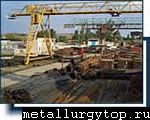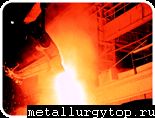Accentuate Your Home With Mirrors
 Looking at your reflection in the mirror, it is hard to imaging that mirrors in some form have been used for 5,000 years, be it they started from a reflection in a pool of water.
Looking at your reflection in the mirror, it is hard to imaging that mirrors in some form have been used for 5,000 years, be it they started from a reflection in a pool of water.
Moving on from a pool of water, early mirrors were often little more than a sheet of polished metal, often silver, copper, or bronze and if any surface area became rusted it was just polished out.
Mirrors have been made of glass for many centuries excepting the Aranmula Kannadi. These mirrors are unique and mysterious, their beauty is unequalled. The metal mirror, a marvel in the annals of metallurgy was in vogue long before the appearance of today's glass mirror. Used in ancient Egypt and Bagdad the mirrors are still made at Aranmula in India, a creation which is secretly guarded and possess a Geographical Indication tag.
Mirrors are often used in magic to create an illusion the same as con be cone with mirrors in your home. Mirrors reflect light and if placed in correct positions will increase indoor light without using increased energy.
Large and unframed mirrors are frequently used in interior decoration to create an illusion of space, and amplify the apparent size of a room. By randomly arranging four or five mirrors in a room that has no shape or appeal, the placement of the mirrors will provide you an artistic show.
Curved mirrors can be used to produce magnified or de–magnified images or to increase the focus on the light in the room.
Antique mirrors provide a feeling and a sense of softness to any décor and antique replicas are crafted by contemporary artisans for use in interior design. These reproduced antiqued mirrors are often works of art and can bring color and texture to your decor.
Most modern mirrors consist of a thin layer of aluminum deposited on a sheet of glass. Glass, the main component is a poor reflector, but has the uniformity required, particularly when polished. This means that the glass contains very few pits after polishing and becomes an effective base for the reflective layer of metal.
So don't just leave your mirrors in the bathroom or behind the bedroom door, use them to accentuate your home, or even some prized possessions. A beautiful piece of ceramics improves aesthetically if its presentation if reflected from a strategically placed mirror.
As co–owner of So Divine, my goal is to provide excellent Home Décor products at affordable prices and to give you the best customer and sales support!
With many travels to Mediterranean countries, a deep love and understanding of this region has developed.
Candles are as much of history as is the ancient world, the two marry together. Candles have always been lit in our home.
A lover of natural products and fragrances I have sought information relating to products that can fulfill those needs as well as providing a safe environment.
Initially our endeavors were to satisfy the needs of our family members, but with requests coming from visitors and relatives far and wide we quickly realized that many people were interested in the same home décor and accessories that we had been sourcing for many years.





Metal Injection Molding
 What is Metal Injection Molding?
What is Metal Injection Molding?
Metal injection molding is a powder metallurgy process used for manufacturing metal parts. Although metal injection molding uses powder metal, it is nothing like conventional powder metal processing. The metal powders used in metal injection molding are 10–100 times smaller than in powder metal processes. Also, the end product of metal injection molding is much higher in density. Metal injection molding offers the same benefits and features as plastic and rubber molding, but produces a much stronger end product. Applications for metal injection molding parts include surgical tools, automotive locks and actuators, firearm components, computer hard disk drives and electrical connectors.
Process of Metal Injection Molding
Metal injection molding is a fast growing manufacturing method that bridges the gap between the technology up gradation and costs involved. The metal injection molding process involves five steps, mixing, injection molding, de binding, sintering, and part finishing.
In the mixing step, metallic powders, selected for their strengths and inherent abilities such as impact strength, high and low temperature characteristics, wear resistance characteristics, machine ability, and hardness, are mixed, often with a binding agent. By mixing powders, the goal is to create a composite with the strengths and benefits of all the incorporated metals, while offsetting the independent weaknesses.
Once the powders are mixed, a «feedstock„ is produced. This feedstock is injected into molds in the same way that plastic or rubber injection molding is performed. The part that emerges from the injection molding stage is referred to as a “green» part.
In the de binding stage of metal injection molding, the green part is immersed in a water bath to remove the binder, which has entered into the part matrix. In cross–linking, the de bound green part is exposed to ultraviolet light which thermo sets the binding agents used with the metal powders.
Once the de binding stage has been completed, the part is placed into a furnace and heated to over 2000 degree Fahrenheit. This process, called sintering, fuses the metal parts into a solid shape. Finally, the sintered piece is sent to a finished stage where burrs and surface imperfections are removed and the finished part can be shipped.
Advantages of Metal Injection Molding
– High Shape Complexity
– Low Cost
– Tight Tolerances
– High Density
– High Performance
Uses of Metal Injection Molding
The technology excels at applications that require shape complexity and high final properties, such as high strength and density, excellent magnetic permeability, high temperature strength, corrosion resistance, and thermal conductivity in applications that cannot be fulfilled by plastics or light metal alloys. Metal injection molding is thus best for some of the following uses viz. making of microelectronic packaging, automotive sensors and actuators, hand tools and hardware, computer heat dissipation devices, oil well drilling tools, aerospace and engine fuel components.
To Sum Up
Metal injection molding can provide a substantial cost savings over conventional metal machining options. Metal injection molding parts have high densities and mechanical properties approaching those of forged or machined components. Metal injection molding process can produce more complex parts than either investment casting or traditional press and sinter techniques.
By Ray Walker





A History of the Bicycle
 Today we all enjoy riding bikes and pedaling through the streets on our way to work or simply going for a ride through the park. The bicycle, however, is a versatile invention that has gone through a variety of forms before reaching its present state.
Today we all enjoy riding bikes and pedaling through the streets on our way to work or simply going for a ride through the park. The bicycle, however, is a versatile invention that has gone through a variety of forms before reaching its present state.
The first thing that was created that looked even remotely like a bicycle was developed by the Baron von Drais as an aid to walking in the royal gardens faster. Two wheels of the same size were mounted in a frame which you straddled. This device did not have pedals and instead was propelled by pushing one's feet against the ground creating a kind of gliding walk. Eventually, the machine came known as the Draisienne or hobby horse. This invention enjoyed a short period of popularity as it was not practical for transportation in any place other than a well maintained pathway such as one in a park or garden.
The next two–wheeled transportation item appeared in 1865. This incarnation of the bicycle was different because pedals were applied directly to the front wheel. It was known as the velocipede or «fast foot.» While that may have been the device's official name, the common name for the item was the bone shaker. It got this name as it was made entirely of wood originally. Later, the wheels were made of metal. These factors, when combined with cobblestone roads, made for an uncomfortable, bone shaking ride, hence the name.
In 1870, the first all–metal bicycle appeared. Prior to then, the metallurgy was not advanced enough to provide metal which was strong but also light. The pedals on this bike were still located on the front wheel. Other improvements included a solid rubber tire and long spokes on the front wheel. These additions guaranteed a much smoother ride than the predecessor. The front wheels became larger and larger once bike makers realized that the larger the wheel was, the further a person could travel with one rotation of the pedals. These bicycles were very popular among young men of means and the hey–day was during the 1880s.
Unfortunately, the rider sat very high above the center of gravity of the bike so when the front wheel was stopped by a stone or a rut in the road, the entire bike rolled forward and the rider was unceremoniously dropped on his head. This is where we get the term «taking a header.»
With the improvement in metal working towards the end of the 19th century and start of the 20th, a return to a previous design occurred. Metal was now strong enough to make a fine chain and a sprocket small enough and light enough for a human to power. This lead to the return to the original configuration of two identically sized wheels. The new part here was that a person could go faster thanks to gear ratios. These bicycles had the same hard rubber tires and so provided an uncomfortable ride; however, many of these bicycles had front and/or rear suspensions.
The pneumatic tire was first put on a bicycle by an Irish veterinarian trying to make his son's tricycle more comfortable. The veterinarian's name was Dunlop. Comfort and safety could now be had in the same package. This package was getting cheaper as manufacturing methods improved and competition drove the price down.




